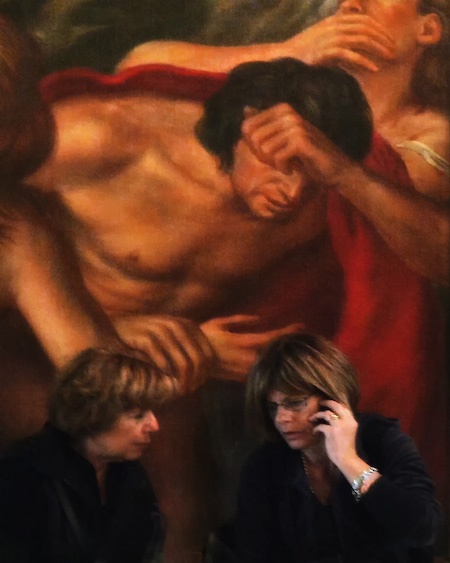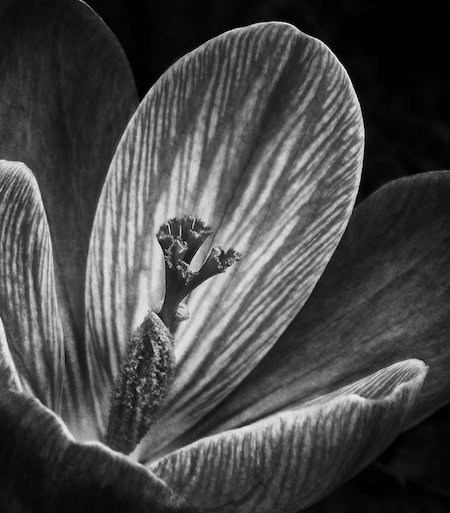Tips for Stronger Compositions
March 9, 2021 by Michael Koren
“To compose a subject well means no more than to see and present it in the strongest manner possible.”
– Edward Weston
 The composition of a photograph is the single most important element a photographer uses to convey an artistic statement. What’s included, excluded and the arrangement of elements within the frame is all part of composition.
The composition of a photograph is the single most important element a photographer uses to convey an artistic statement. What’s included, excluded and the arrangement of elements within the frame is all part of composition.
Composition makes order out of the chaos of a three-dimensional world and distills it to the two-dimensional picture that becomes a photograph.
The photographer is responsible for everything within the frame. Imagine if Albert Bierstadt included a stray trashcan near the bottom of one of his Yosemite paintings. Or if Leonardo Da Vinci painted a tree branch extending from the ear of the Mona Lisa. Or, while reading Hemmingway’s The Old Man and the Sea, finding a grocery list within the text just after the marlin bites the hook. All these examples would be a poor choice of composition. The elements of the trashcan, tree branch or grocery list do not belong in the final artwork.
Framing with the viewfinder is the first step towards good composition.
Get rid of distracting elements in the frame. If it doesn’t add to the photograph it subtracts.
To effectively remove distracting elements and make a stronger composition:
 Try moving the subject
Try moving the subject- Change the angle of view
- Change perspective
- Use a different lens
- Get closer
Concentrate on avoiding clutter:
- Watch the borders
- Fill the frame
- Shoot variations
- Pay attention to background tones.
- Look for hot spots caused by bright lights and reflections and black holes from dark shadows. Bad backgrounds ruin more photos than bad lighting.
There are several concepts to keep in mind when photographing that will help produce pictures with stronger compositions.
- Rule of Thirds - an imaginary grid that divides the picture frame into thirds: top to bottom, left to right. The subject should be on or near intersections of the grid lines. I placed the picture of the lone sunflower along the left third of the image because that was the main subject. The other sunflowers in the field are part of the setting and tell the story as supporting characters.
- Leading Lines - look for items in the frame that have generally straight lines that are directed at the main subject. This could be roadways, architectural elements, shadow or light areas, natural formations and even body parts. The picture of the light created by the prisms built into the wall of the Museum of the American Indian created leading lines to the shadow of the person at the bottom of the frame.
- Color vs Black and White - this choice is rarely thought of as a compositional choice but it’s just as important to the feeling you as a photographer want to convey. Ask yourself if the picture has color that needs to be in the final picture or is the picture about tone, texture, and shades? This picture of a flower has two different looks because of the difference created between the vibrant color and the monochrome study of tones and texture.
- Foreground and Background - build pictures from the background forward. The layering of both the foreground and background give a sense of depth or helps tell a story. This picture effectively uses the background mural to add a sense of emotion to the conversation between the two women and the person on the phone.
 Here are three easy assignments to give yourself to help practice building a visually stronger composition.
Here are three easy assignments to give yourself to help practice building a visually stronger composition.
- Assignment 1: Choose a subject of interest and create three different photos with different compositions.
- Assignment 2: Choose a subject and find the angle with the best background. Walk all around the subject looking at it from all views.
- Assignment 3: Layer and frame a subject in three different photos. Only one can include a door or window.
For more practice and to receive gentle feedback, consider taking any In the Field Shooting class!
Michael Koren is teaching the following classes. Join him and pick up tips in the field with Michael guiding you.
March 21, 2021: Exploring Antietam Battlefield
April 11, 2021: Creative Smartphone Photography Field Shoot - Chinatown/Penn Quarter
April 25, 2021: Exploring Street Photography
May 15, 2021: Composition Field Shoot In Baltimore’s Harbor Area
